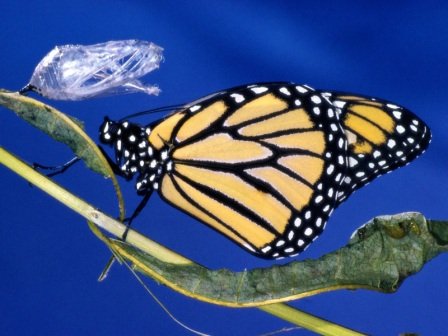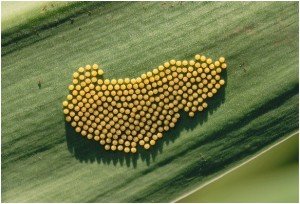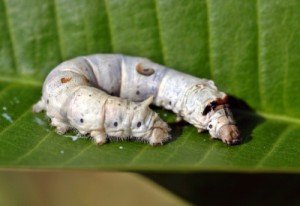The life cycle of butterflies
The life span of butterflies depends on many factors and can be very variable. For example, it depends on the size of the butterfly, the species, where it lives and at what time of the year it became an adult. If the butterfly is small it probably will not live that long, but if it is a larger butterfly, it will surely live longer.

The average life of a butterfly is usually around a month, the smallest usually live about a week, while some as the Mourning Layers, some tropical Heliconians and the Kings, have an average life of about nine months
Butterflies are cold-blooded creatures, so the weather will be another factor to consider when it comes to butterflies. If the butterfly egg has been placed just before the cold weather arrives, the egg will stay in this shape until the weather warms up, and as soon as it happens, the caterpillar will incubate and everything will start again. If the butterfly is an adult butterfly and winter arrives without migrating south, the butterfly will hibernate somewhere until the weather warms. This means that a butterfly could live for many months beyond the average life expectancy, it all depends on the climatic conditions and what these creatures do once the winter.

Butterflies in the wild are also exposed to many predators such as birds and other insects, which sometimes causes them to not live as long as they are able to.
We can explore the life cycle of a butterfly in detail, which is divided into 4 stages. All butterflies have "complete metamorphosis", to become an adult have to travel through the following 4 states: egg, larva, chrysalis and adult. Each stage has a different objective, for example, caterpillars need to eat a lot and adults need to reproduce. Depending on the type of butterfly, the life cycle can last between a month and a year.

A butterfly begins its life as a very small round egg. The most curious of these eggs, especially the eggs of monarch butterflies, is that if you look close enough you can really see the little caterpillar that grows inside them. The shape of the egg depends on the type of butterfly, some can be round, oval, grooved, among other characteristics.
Butterfly eggs are usually placed on the leaves of plants, so if we try to find them, we will have to take some time to examine several leaves in order to find one.

After the eggs have been deposited, many would expect to see the butterflies come out, but this is not exactly the case, in the life cycle of the butterfly, there are four stages and this is only the second. Butterfly larvae are actually what we call caterpillars, which do not usually stay for a long time in that state and mainly what they do while it lasts, is to eat

When the egg hatches, the caterpillar begins its work and eats the leaf in which it was born. The leaf that is selected to lay an egg is a very important detail because it must be of a type of leaf that the caterpillar can eat, each type caterpillar likes only certain types of leaves.
Caterpillars need to eat and eat so they can grow quickly. When a caterpillar is born, it is extremely small, when it begins to eat, it immediately begins to grow and expand. Their exoskeleton or skin neither stretches nor grows, the expansion of their bodies occurs through the shedding of the skin, a process that takes place several times.
The third stage: the chrysalis
The chrysalis stage is one of the best stages of a butterfly's life. As soon as a caterpillar grows larger and has reached a certain length and weight, it wraps itself in a kind of chrysalis. From the outside it looks like the caterpillar is resting, but inside it is where all the action happens, that's where the caterpillar is changing rapidly.
Now, as most people know, caterpillars are short, stubby and have no wings. Inside the chrysalis the old parts of the caterpillar's body are undergoing a remarkable transformation, called metamorphosis, to become the beautiful parts that make up the butterfly that will emerge. The tissues, organs and limbs of the caterpillar have been modified in the time that the chrysalis lasts and everything is ready for the final stage of the life cycle of a butterfly.
The Fourth Stage: the adult butterfly
adult butterflyFinally, when the caterpillar has made all its transformation inside the chrysalis, you can see how an adult butterfly emerges. At first the wings will be soft and bent against your body, because inside the chrysalis should adapt to the conditions of your new body.
As soon as the butterfly has rested after leaving the chrysalis, it will pump blood on the wings in order to put them into operation and be able to fly. Usually, within a period of three or four hours, the butterfly will fly out to find a mate and reproduce, thus the life cycle begins again.
How can you see the life cycle of the butterfly?
There are several ways for people to observe this show in front of their eyes, for example, there are kits of live butterflies that include caterpillars so that you can see this amazing transformation up close. These kits of live butterflies are amazing for a science project or just for children to learn everything about the caterpillar in constant change and the life cycle of the butterfly in general. One of the best things about these kits of live butterflies is the fact that after the butterflies come out of their chrysalises, they can be observed for a while and then let go. This action is not only a satisfying experience, but it is very important to teach your children that animals should not be enclosed and that although it is fun to observe them, it is always better to let nature take its course.
This incredible life cycle is a great lesson for anyone to learn and it is not just a lesson that involves an insect in constant change, we can also apply it to ourselves. For example, when a child feels dissatisfied with himself, he can explain to them that, like butterflies, people are also constantly changing, day after day.

upvote for me please? https://steemit.com/news/@bible.com/2sysip
Congratulations! This post has been upvoted from the communal account, @minnowsupport, by robotgirl36 from the Minnow Support Project. It's a witness project run by aggroed, ausbitbank, teamsteem, theprophet0, someguy123, neoxian, followbtcnews, and netuoso. The goal is to help Steemit grow by supporting Minnows. Please find us at the Peace, Abundance, and Liberty Network (PALnet) Discord Channel. It's a completely public and open space to all members of the Steemit community who voluntarily choose to be there.
If you would like to delegate to the Minnow Support Project you can do so by clicking on the following links: 50SP, 100SP, 250SP, 500SP, 1000SP, 5000SP.
Be sure to leave at least 50SP undelegated on your account.